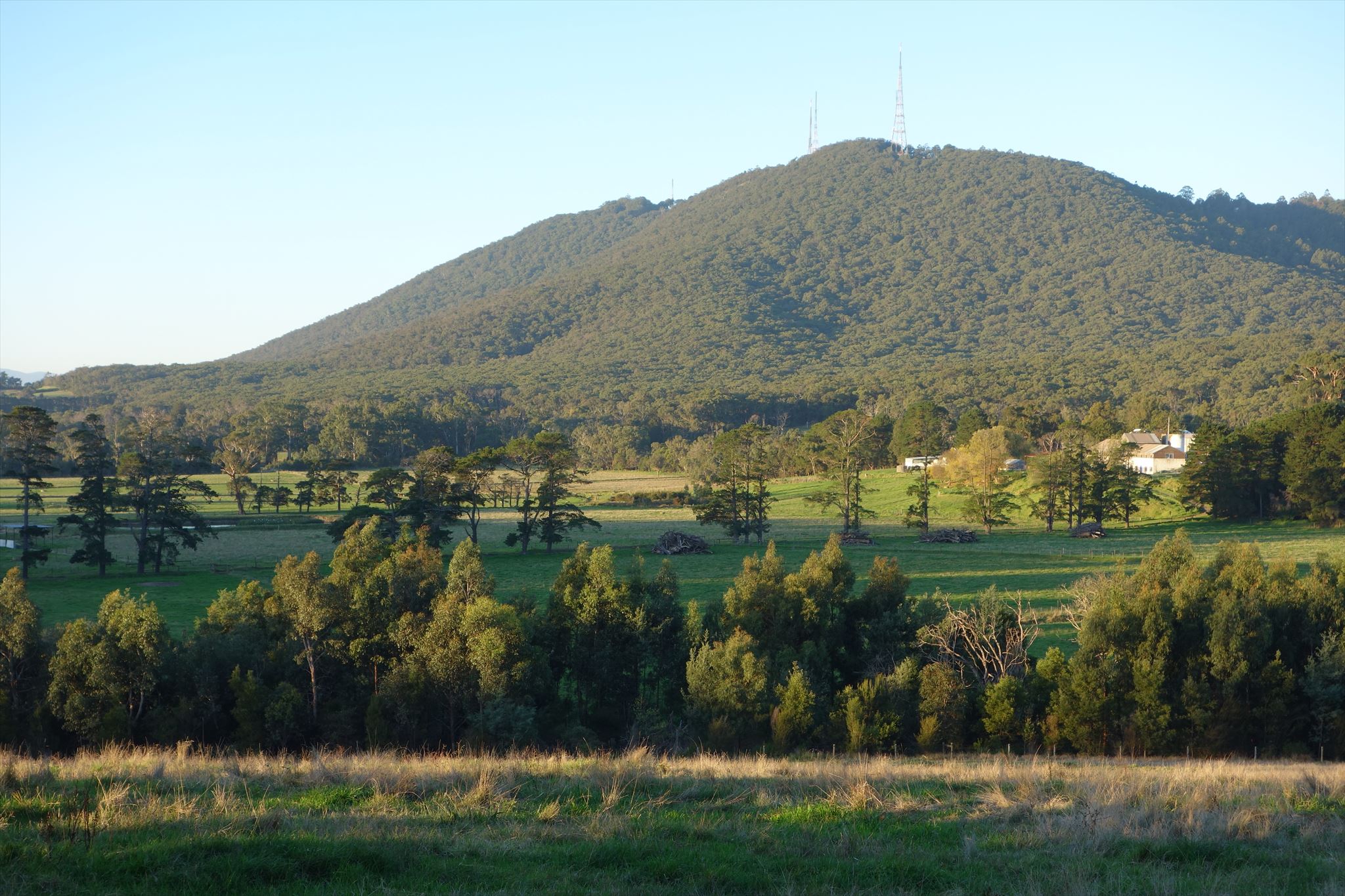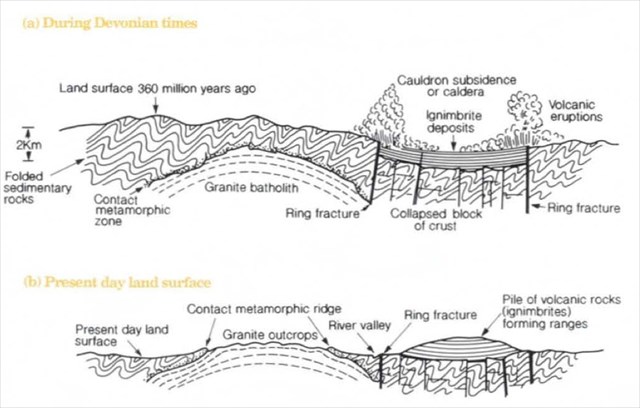
From your viewpoint at the foothills of the Dandenong Ranges in The Basin, you can see the remains of the volcanic eruption from over 300 million years ago. But even before the eruption, the earth's crust had to be weakened 50 million years before that. This happened all over the earth, and not just here near the Dandenongs.
Up the mountain, near where the township of Olinda is today, a series of volcanic eruptions pushed up through the earth's crust during the Late Devonian period. At Olinda, there were four distinct lava flows that went in four different directions. The eruptions deposited thick sheets of ignimbrites (the word 'ignimbrites' comes from a Latin mash-up for 'fiery rock dust cloud') that hardened and formed the mountain range.
These ignimbrites came from a huge amount of molten magma that had risen very close to the earth's surface. Magma is an extremely hot, fluid melt with molten rock, crystallised minerals and dissolved gases. The magma broke through the earth's crust and caused a spectacular volcanic eruption.
Usually this kind of eruption happens so fast and with so much force, that it leaves a depression in the earth called a caldera or cauldron. What is left when a cauldron collapses is called an intrusion. An intrusion is the rock that forms when magma cools on the earth's crust.
Over time, the old cauldrons of the Dandenong Ranges have collapsed and eroded. If you didn't know what had happened to the earth over millions of years, it would be hard to pick this idyllic spot as the remnants of an old volcano.
Have a look at the diagram below to get an idea of what happened at the time of the eruption, and what we can see in the present day. (And yes, this will be on the test!)

From Introducing Victorian Geology, 2nd ed. Geological Society of Australia, Melbourne: 1995.
The actual eruption was a massive event in Victoria's geological history. Volcanoes, like the one that formed the Dandenong Ranges, "were amongst the most spectacular and catastrophic events ever to affect Victoria. Huge cylindrical or rectangular blocks of crust, many kilometres across, collapsed along fractures into magma chambers below.
"Magma forced its way up these fractures and erupted with great violence. Eruption took place not from a single crater, but in a continuous line or arc of fire along the fractures. The magma exploded into huge billowing clouds of very hot gases carrying crystals and fragments of glass and frothed-up magma known as pumice. These turbulent mixtures flowed like boiling milk over the landscape at speeds up to 100 kilometres per hour. When they eventually came to rest, the solid particles settled into layers blanketing the surface. The resulting layer was often still hot enough for the glassy particles to stick or weld together to form a hard compact rock known as an ash flow ruff or ignimbrite." (Introducing Victorian Geology, 2nd ed. Geological Society of Australia, Melbourne: 1995).
Your task is to use the information above and your observations at the site to answer three questions:
1. Looking at the diagram above, and the shape of the mountains in front of you, what are the Dandenong Ranges formed from:
A: Contact metamorphic ridge;
B: Granite outcrops;
C: Ring fracture; or
D: A pile of volcanic rocks?
2. What do you think might have caused the erosion of the remaining intrusion? (Take a guess, I'm interested in your thinking)
3. Was the volcanic eruption that began the formation of the Dandenong Ranges a nice, genteel thing, or was it more along the lines of a spectacular explosion scene in a Hollywood movie?
Once you complete the EarthCache requirements you can post your find without delay, as per the EarthCache guidelines. You will also need to verify your find by sending me a message and provide your answers to the questions.
Please don't park at the side of the road! Please use the small parking space on Mountain Highway indicated, or use the carparks across the road at the shops.
Sources
Dandenong Ranges National Park, Parks Victoria, Web: http://parkweb.vic.gov.au/explore/parks/dandenong-ranges-national-park.
Introducing Victorian Geology, 2nd ed. Geological Society of Australia, Melbourne: 1995
The Dandenong Ranges, Kornelia Freeman & Ulo Pukk, Melbourne Books, Melbourne: 2014.
| I am a proud |
 |